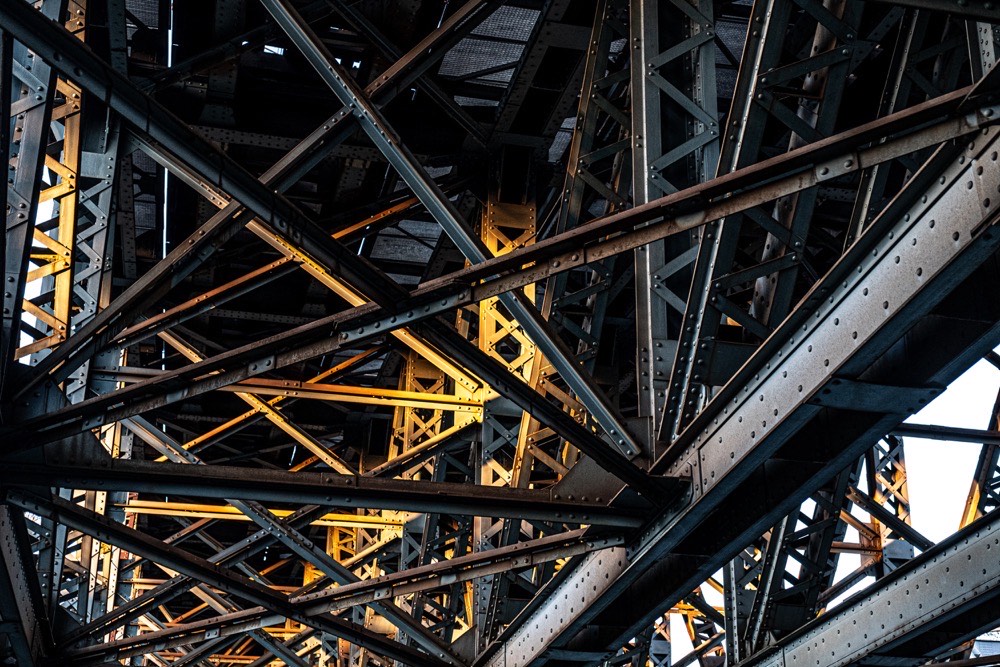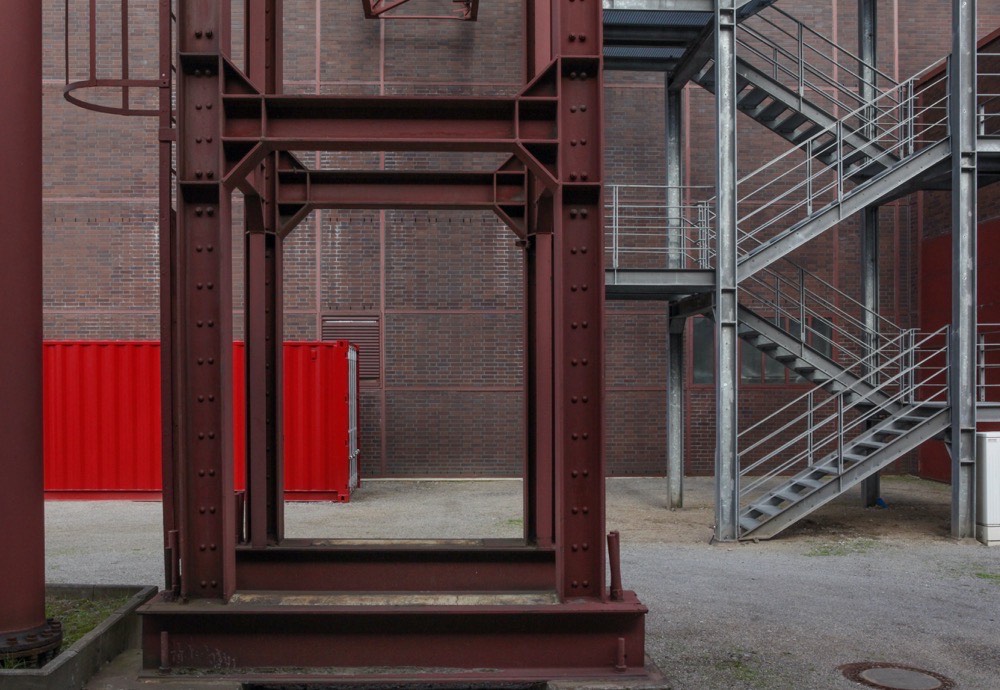Back
What is Steel Fabrication: An In-Depth Exploration and Comprehensive Guide

Unveiling the World of Steel fabrication: Exploring its Definition, Components, Applications, and Growth.
Table of Contents.
- Introduction
- Understanding the components of steel fabrication
- Application of steel fabrication
- Growth of steel fabrication in Asia over the past 20 years
- Advantages of steel fabrication
- The future of steel fabrication
- Conclusion
Introduction.
Steel fabrication is a comprehensive process that involves the transformation of raw steel into a final product. This process entails the manipulation of raw steel through various methods such as cutting, bending, and assembling to create a specific structure or component. Steel fabrication plays a crucial role in many industries, including construction, automotive, and aerospace, due to its versatility and durability.
The purpose and utility of steel fabrication are vast and varied. It's used to create a myriad of items, from individual parts for machinery to large-scale structures like bridges and skyscrapers. The strength and flexibility of steel make it an ideal material for these applications. Furthermore, fabricated steel components can be customized to meet specific design requirements, enhancing their utility in diverse projects. In essence, steel fabrication enables industries to create durable, high-quality products and structures tailored to their unique needs.
Explore the fascinating world of steel fabrication in our comprehensive guide. Discover the various industries, applications, advantages and future developments. Ideal for anyone looking to understand the fundamentals and importance of steel fabrication in today's industries.
Understanding the components of steel fabrication.
The world of structural steel is vast and varied. From H-beams to steel plates, angle bars, and beyond, these components are the building blocks of numerous structures and objects we encounter daily. Let’s explore their characteristics and how they're used in the fabrication process.
H beams.

Named for their shape, which resembles the letter 'H', H-beams are a key component in industrial steel structure. They're known for their strong load-bearing capabilities, making them ideal for large-scale construction projects like skyscrapers and bridges. The flanges of an H-beam are thicker and wider than those of I-beams, which offers greater strength and stability.
H-beams are often used as primary support structures in buildings and bridges. They're typically connected by welding or bolting. The strength of H-beams makes them ideal for withstanding heavy loads and resisting bending.
Steel Plates and metal Sheets.
Steel plates are flat sheets of steel that come in various thicknesses. They're often used when additional strength is needed in a structure, such as in the construction of buildings or the hulls of ships. Steel plates can be welded or bolted together and can also be bent into shape to create custom components.
During the fabrication process, steel plates are cut and shaped according to the project's specifications. They can be joined together through welding or bolting to form larger structures. The versatility of steel plates allows them to be used in a wide range of applications, from creating the framework for buildings to forming parts of machinery.
Metal sheets are flat, thin pieces of metal that come in a variety of types, including steel, aluminum, brass, and more. They're used in many applications, such as the construction of buildings, the production of machinery, and even in the creation of consumer goods.
At our company, we proudly supply high-quality steel plates, catering to a vast array of structural and industrial needs, ensuring durability and versatility in all your construction projects.
Angle Bars.

Angle bars, or L-shaped bars, are used in structural steel for their ability to withstand stress from different directions. They're commonly used in building frames, bridges, and towers. Angle bars offer excellent strength-to-weight ratio, making them a cost-effective choice for many projects.
In the fabrication process, angle bars are often used to create frames and corners due to their L-shape. They can be easily connected to other components via welding or bolting, providing stability and strength to the overall structure.
Rebars.
Rebars, or reinforcing bars, are steel bars used to reinforce concrete structures, enhancing their tensile strength. Given the projected growth of the global steel rebar market, which is expected to reach USD 490.50 billion by 2030 (according to Global News Wire). It's clear that rebars play a vital role in the construction industry. They're often used in the construction of buildings, bridges, and roads due to their high durability and ability to withstand pressure.
Steel Welded Wire Mesh.

Steel welded wire mesh is a versatile product made by welding steel wires together at their intersections. It's used in a variety of applications, from fencing to reinforcement in concrete construction Special forms of this product, such as reinforcing mesh and steel supports, are utilized in construction for trenches, ladders, truss mesh, rebar cages, pile cages, and more.
To sum up, the components of structural steel — H-beams, steel plates, and angle bars — each have unique properties that make them invaluable in the fabrication process. Understanding these components and how they're used can provide insight into the intricate world of steel fabrication, underlining its importance in our everyday lives.
Applications of steel fabrication.
Steel fabrication is a versatile process with a multitude of applications across various industries. From construction and automotive to aerospace and manufacturing, fabricated steel components are integral to our daily lives. In the construction industry, steel fabrication is used to create structural elements for buildings, bridges, and tunnels. The high-rise skyscrapers that define city skylines are often made of fabricated steel due to its strength and durability. In the automotive industry, fabricated steel parts form the backbone of vehicles, contributing to their safety and performance. Components like the car's chassis, body parts, and even smaller elements like gears and bearings are products of steel fabrication. The aerospace industry also relies heavily on steel fabrication for constructing aircraft parts due to steel's resistance to heat and corrosion.
Lastly, in the manufacturing sector, steel fabrication is used in creating machinery, equipment, and tools. For instance, the conveyor belts in factories or the large-scale industrial machinery are often comprised of fabricated steel. These real-life examples underline the ubiquitous role of steel fabrication in shaping our modern world.
Growth of Steel Fabrication in Asia over the past 20 Years.
The growth of steel fabrication in Asia, has been impressive over the past two decades. Countries such as India, Japan, and South Korea have significantly contributed to this expansion. India, witnessing a 7% annual growth in its construction sector, has seen a surge in demand for fabricated steel products. Japan, with its advanced manufacturing sector contributing about 20% to its GDP, utilizes high-quality fabricated steel in its automotive and electronics industries. Similarly, South Korea, being the world's fifth-largest automobile producer, has its shipbuilding and automotive industries as significant consumers of fabricated steel. The economic growth of these nations, averaging around 5-7% annually, coupled with technological advancements and increased infrastructure development, have collectively fueled a robust growth in the steel fabrication industry across Asia4.
Vietnam has seen significant evolution and growth as well. In fact, the Vietnamese iron and steel industry has developed remarkably under international economic integration A major factor contributing to this growth is the availability of a highly skilled workforce. Today, Vietnam's steel industry is one of the fastest growing in the world, with the Vietnam Structural Steel Fabrication Market expected to reach USD 2.61 billion by 2023.
Advantages of Steel Fabrication.
Steel fabrication holds an array of advantages that make it a preferred method in many industries, particularly in construction. One of its primary benefits is its cost-effectiveness. Fabricated steel allows for rapid construction with fewer on-site workers, thus reducing labor costs. It also fits well into budgets when compared to other materials like wood.
In addition to being economically beneficial, steel fabrication offers robustness and durability. Its high carbon content gives it great strength, lightness, and low elasticity, making it suitable for various commercial and industrial applications. Furthermore, steel is more versatile than most building materials. Its adaptability enables it to be molded into almost any shape, catering to specific project needs.
Lastly, steel fabrication promotes sustainability. Steel as a material produces a lower carbon effect and is highly recyclable, contributing to environmental safety. The combination of these advantages makes steel fabrication a go-to choice for multiple sectors.
The future of Steel Fabrication.
The future of steel fabrication is poised to be fundamentally transformed by advancements in technology and increasing environmental consciousness. Technological innovations such as automation, artificial intelligence (AI), and 3D printing promise to revolutionize the fabrication process, enhancing precision, efficiency, and productivity. The advent of automated welding machines, for instance, can reduce human error and increase the speed of production. Concurrently, AI can offer predictive analytics to facilitate proactive maintenance of fabrication machinery, minimizing downtime. The burgeoning field of 3D printing, moreover, presents a paradigm shift, enabling intricate steel structures to be fabricated with reduced wastage. On the environmental front, the industry is moving towards more sustainable practices, including the use of renewable energy in production processes and the development of new steel alloys that are both stronger and more recyclable. These developments, combined with a continued commitment to innovation, suggest a bright and sustainable future for the steel fabrication industry.
Conclusion.
In summary, steel fabrication is on the brink of a new era, driven by technological innovation and a renewed focus on sustainability. As the industry embraces advancements such as automation, AI, and 3D printing, the fabrication process is expected to become not only more precise and efficient but also more environmentally friendly. These changes will be instrumental in meeting the evolving demands of various sectors that rely on steel fabrication. As such, the future of this industry looks promising, underpinned by a strong commitment to continual improvement and sustainable practices.
Visit our QH PLUS website today to explore deeper into the exciting world of steel fabrication.